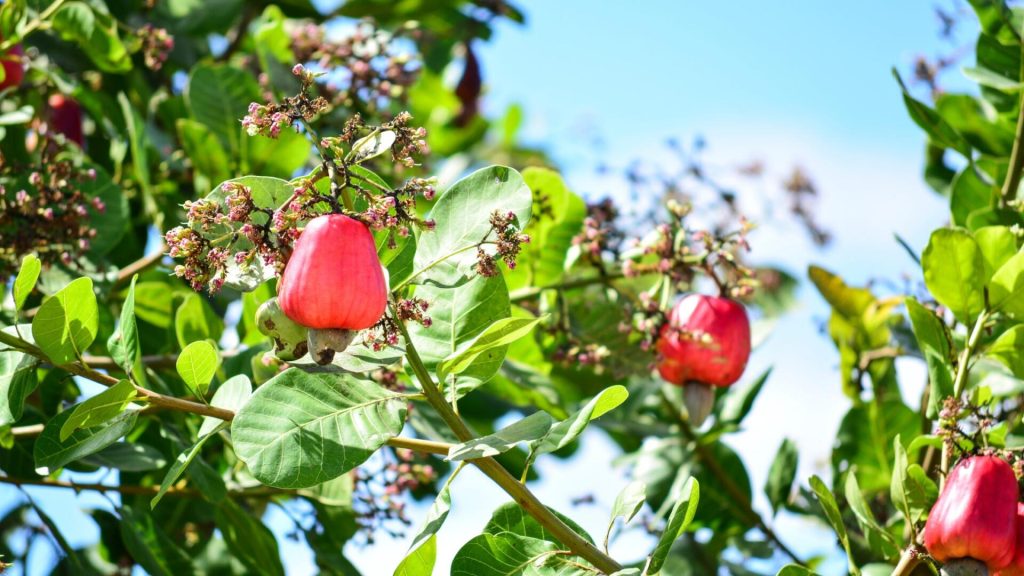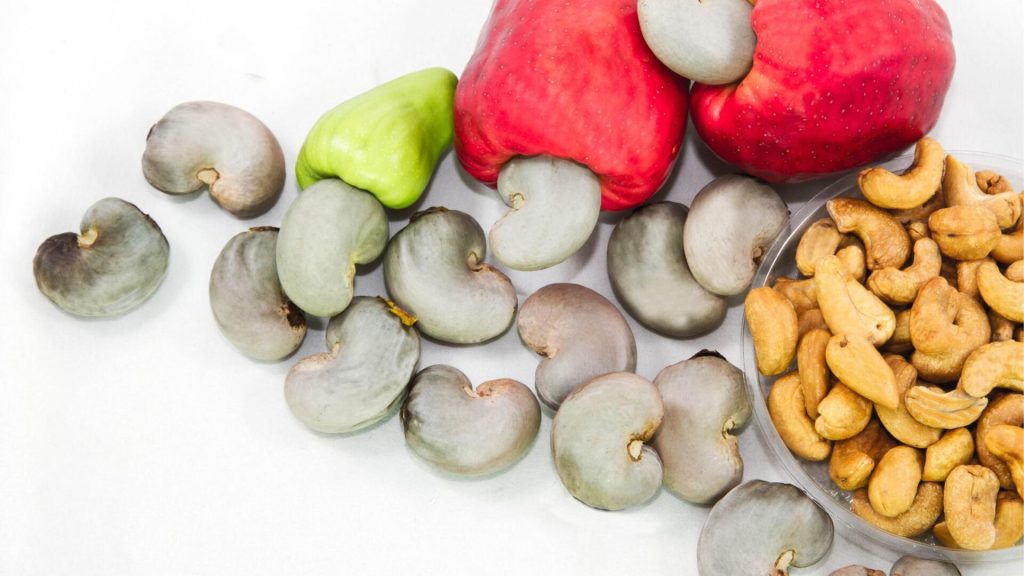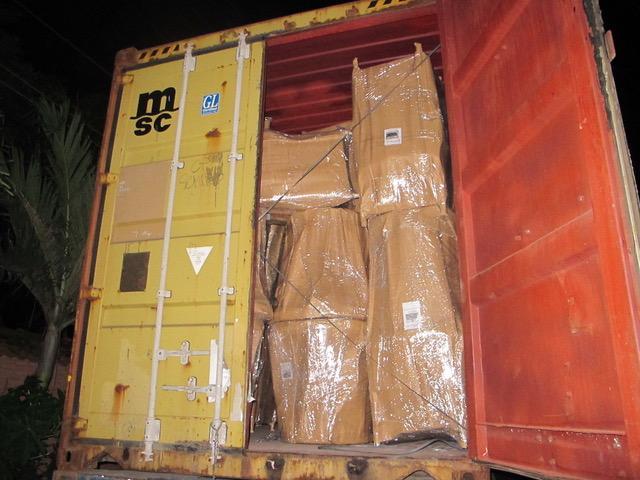Cashew nuts are among the most widely used nuts in the world because of their excellent flavor, advantageous health benefits, and variety in cooking.
As a result, cashew nut growing and production are quite common worldwide, especially in Vietnam – the leading countries that grow and export cashew nuts around the globe.
Overview and Statistic of The Vietnam’s Cashew Nuts Market
Over the past 30 years, from a country that exports raw cashew in small quantities, Vietnam has become the largest cashew nut exporter in the world.
Furthermore, Vietnam is an excellent cashew exporter to the EU region after being licensed to export cashew nuts since 2017.
Market Overview, Statistics of Vietnam Cashew Nuts
Vietnam’s cashew nut export value increased by 13% from 2020 to 3.63 billion USD in 2021.
Vietnamese cashew nut exports in April 2022 totalled 49,000 tons, or 290 million USD, an increase of 22% in volume and 21% in value over March.
Vietnamese nuts are exported to most of the world’s nations, including the US, Europe, and China, as Vietnam is the global leader in the production of cashew nuts.
The Netherlands, Germany, the United Kingdom, and Italy are all among Vietnam’s top 10 export markets for cashew nuts.
The Vietnamese cashew market has grown faster thanks to the effect of EVFTA (EU – Vietnam Free Trade Agreement).
In 2021, the EU is Vietnam’s second largest cashew nut export market, accounting for 23% of the total volume and 22% of the total value of the industry. Specifically, cashew nuts exports to the EU market reached 135 thousand tons, worth 816 million USD, up 16.5% in volume and 8% in value compared to 2020.

International and the EU’s Consumption Trend
Global trends are favoring vegan and plant-based diets, favoring alternative protein sources, leading to increased demand for nuts and nut-based foods.
In Europe, because of the increasing health consciousness of consumers, cashew nuts consumption is increasing. Recently, cashews have also been increasingly used as an ingredient in dishes and snacks.
Vietnamese Cashew Nuts
I) Summary of Vietnamese Cashew Nuts Growing
The cashew was initially introduced to Vietnam in the 19th century.
Since 1990, Vietnam has led the production and export of cashew nuts to other continents, especially Asia.
When cashew nuts were originally cultivated in backyard gardens, the Vietnamese government immediately started assisting with their production.
To increase the nation’s cashew nut production, the government founded the VINCAS, or Vietnam Cashew Association.
II) Vietnam’s Key Cashew Growing Region
Vietnam’s “cashew capital” and largest cashew growing and producing region is Binh Phuoc, which has 137,368 acres of cashew trees and accounts for nearly 50% of the nation’s cashew area.
The majority of cashew nuts businesses and industries in Vietnam are situated in the province of Binh Phuoc.
Whole White Cashew Kernels are the primary goods produced by the Vietnamese cashew nut industry. The industry for cashew nuts in Vietnam produces 80% Whole Kernels and 20% Broken Kernels.
Vietnam has a high proportion of whole cashew grades as a result of hand shelling (labor-intensive, done by hand).
III) Sorts of Cashew Nut in Vietnam
Vietnam distinguishes cashew nuts according to their size, color, and degree of rupture. They are separated into various groups and recognized with symbols that accurately identify them.
Additionally, each variety of cashew nut has a unique price tag based on its size (large or small), as well as its color (light, yellow, or brown). A cracked nut has a special price, and larger nuts cost more than smaller ones.
The following list of cashew nut varieties and their symbols can be found in Vietnam:
W: Wholes
S: Splits
B: Butts
P: Pieces
LWP: Large White Pieces
SWP: Small White Pieces
BB: Baby Bits

Typically, there are three ways to export cashew nuts:
- Raw cashew nuts.
- Kernels of cashew nuts. (Ws, Lp, w240, w320, w450,
- Cashew Nut Roast. (Chili, honey, coconut, durian, cheese, chocolate, and flavors of these)
IV) General Cashew Nuts Size
V) The Best Classifications of Vietnamese Cashew Nuts
The high-quality cashew nuts are often large, whole-grain, and white nuts according to the cashew nut classification system.
Small and medium-sized raw cashew nuts (RCNs) are the only sizes produced by the cashew tree varieties grown in Vietnam.
And W210 cashew & W240 cashew is the best cashew nut of Vietnamese origin cashews.
Their medium-sized, pale ivory, and lovely whole-kernel cashew has between 220 and 240 nuts per pound (395 – 465 beans/kg) and is referred to as Vietnamese Premium Large Cashew Nuts globally.
- Color: Pale ivory
- Condition: Whole Cashew Nuts Kernel
- Grade: ww210 & ww240 (AFI standard)
VI) Factors that Impact Vietnamese Cashew Nuts Price
Cashew Nuts’ Origin
Origin is a factor that is frequently ignored. However, the sweetness and quality of cashews are greatly influenced by their place of origin, which is why the origin of cashews has a significant impact on cashew nut prices.
There are distinct variances amongst cashews, such as taste, color, and grain size, because different locations have different species of cashew trees.
It should be noted that the origin of cashew nuts is an essential thing that DIRECTLY AFFECTS QUALITY.
Seasons
Weather has a significant impact on both the price of raw cashew nuts and the quantity of cashews harvested.
Vietnam’s season for raw cashew nuts lasts from January to June. Because of the increased demand for Raw Cashew Nuts during the season, the price may increase slightly.
VII) Vietnamese Cashew Nuts Export Price 2021
In July 2021, the average export price for cashew nuts was 6,452.4 USD/ton, an increase of 10.3% compared to the same period in 2020. The average export price of cashew nuts for the first seven months of 2021 was 6,090.4 USD/ton, a 6.7% decrease from the same period in 2020.
VII) Producing Process
Step 1 – Preparing raw materials: The input material for the production process is dried raw cashew nuts.
Step 2 – Sieving size: Raw cashew nuts are put through the size floor machines to divide the sizes, and are arranged from large to small in the order A, B, C, D.
Step 3 – Steamed: After that, the cashews are put into the steam oven with steam technology for about 45 – 60 minutes to ripen the cashews, making the cashew shell softer and more flexible.
Step 4 – Split kernels: After being steamed, cashews are split kernels through automatic splitters.
Step 5 – Drying the kernels: After that, the cashews are put into the drying ovens, dried at the right temperature to make the cashew kernels more ripe and the silk skin to peel off more easily.
Step 6 – Peeling cashew testa: After drying, cashew kernels are transferred to the peeling cashew testa process, which is totally automated.
Step 7 – Classification: After being peeled, cashew kernels are classified to divide into different products such as W240, W320, W450, WS, Lb, etc.
Step 8 – Packing: The finished goods are then packaged in compliance with the customers’ demands. Usually, packings will be vacuum bags and packed in cartons.
Special Features of Vietnamese Cashews Compared to Foreign Cashews
1. Appearance
Vietnamese cashews are typically small but solid and even. We can observe the inside of the intestines when it is cut in half.
The size of the foreign cashews is uneven. Curved seeds are present.
The seed body has wrinkles that can be seen if you look closely. You’ll see that the seed wings are thin and extremely fragile when you separate the seeds.
2. Color
You must definitely avoid utilizing seeds that are white or milky white. Why?
Because high-quality Vietnamese cashews, particularly those from Binh Phuoc, will be ivory golden in color. From the inside out, the color is transparent.
3. Taste
Despite passing through numerous processing processes and being preserved for a long time, cashew nuts in Vietnam still have a great scent and flavor.
Although you won’t immediately taste the food when you bite into it, the seeds are extremely crunchy. The sweetness will be a little oily and linger even after you have finished eating.
Foreign cashew nuts, on the other hand, are slightly spongy but crunchy. For white cashews in particular, the taste is moistened and slightly pale, less sweet, friable, and slightly oily.
Conclusion
Vietnam is one of the world’s top exporters of cashew nuts because of its good soil and climate conditions. Compared to cashews from other nations, Vietnam cashew nuts also score higher on the special points scale for taste and quality. As a result, the globe keeps favouring the import of Vietnamese cashew nuts even more.








